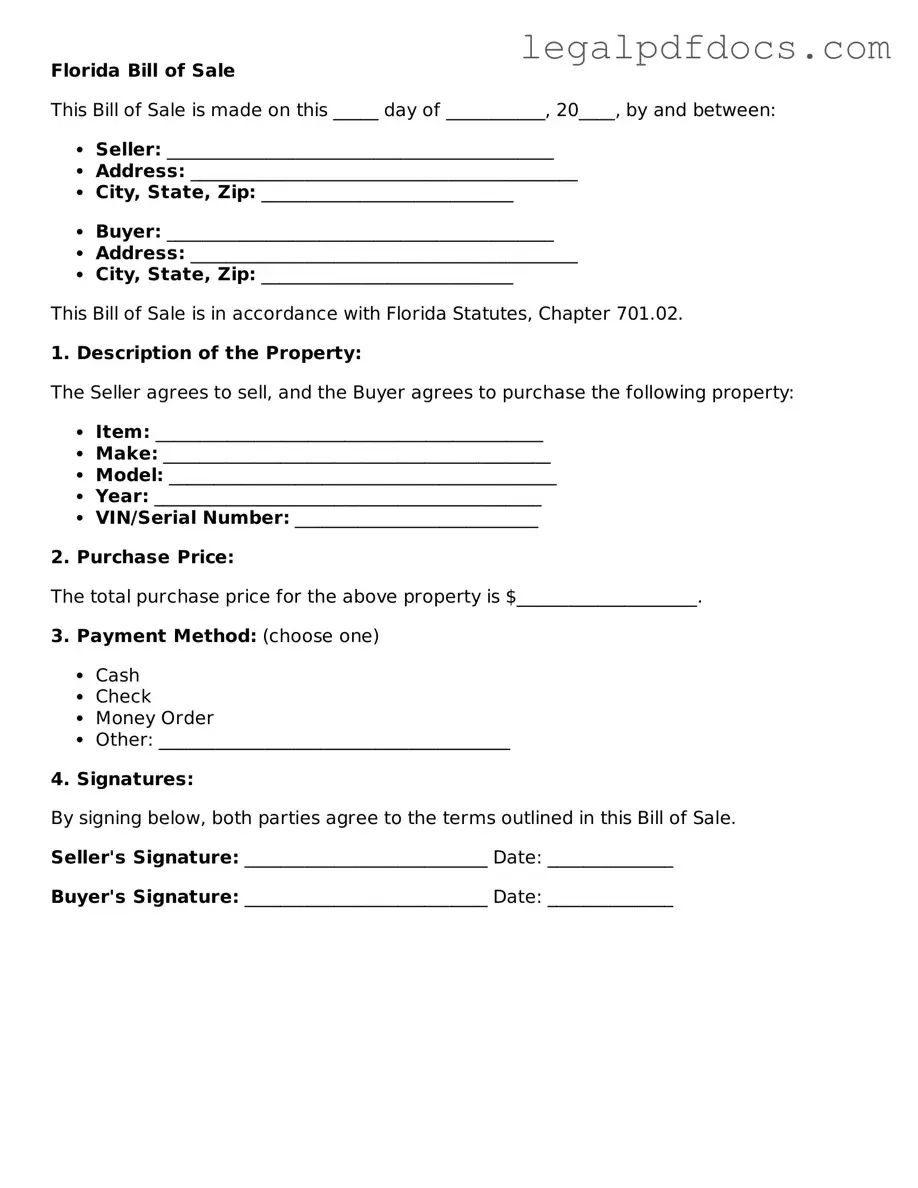Official Bill of Sale Form for Florida
A Bill of Sale is a legal document that serves as proof of the transfer of ownership of personal property from one party to another. In Florida, this form is essential for various transactions, including vehicle sales and the transfer of other goods. Understanding how to properly complete this form can help ensure a smooth and legally binding exchange.
Ready to fill out your Florida Bill of Sale? Click the button below to get started!
Open Bill of Sale Editor Here
